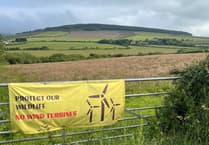The development of a new offshore wind farm in the island’s waters is set to create a number of new jobs for residents in the Isle of Man.
The Isle of Man’s first offshore wind farm is progressing through the early stages of development after Ørsted and the Isle of Man Government signed an agreement for lease at the end of 2015.
The agreement allowed for investigations of an agreed area within the Isle of Man Territorial Sea, located approximately 6 to 12 nautical miles off Maughold Head, on the east coast of the island.
During a public consultation regarding the wind farm, which took place in Douglas last week, representatives from Ørsted highlighted that the proposal would see ‘30 or more good quality jobs’ opening up for the island’s residents.
Benj Sykes, head of environment, consenting and external affairs at Ørsted, said: ‘We'll be operating the wind farm from the Isle of Man, and that will create 30 plus really good quality technician jobs.
‘These jobs would endure for the lifetime of the wind farm, which is estimated to be over 35 years. We’ve seen this be a very important part of our presence in other areas where we've built offshore wind farms, so we’re very excited about what this will mean for people here in the island.’
Other positives for island residents have also been identified, such as tax benefits.
Benj continued: ‘The benefits will be through the rental payments that we'll be paying based on the revenue that comes from selling the electricity we generate. We’re also looking to set up a community benefit fund.’
It has not yet been decided how many wind turbines there will be as part of the project due to the ongoing public consultation.
Up to 100 turbines were initially earmarked as part of the proposals, but Orsted have emphasised that the exact number of turbines will be made clearer when members of the Manx public fill in ‘feedback forms’.
Ørsted development director for the Isle of Man, John Galloway said: ‘We’ve got visualisations and layouts of our maximum design scenario, which also assesses the environmental impact that design would have.
‘We’ll take the feedback and then look at the plans and refine them accordingly. There's a reason consultation is happening this summer, because we need the time between the end of summer and our next application in the spring to refine and design what we'll put forward.
‘The number of turbines will also depend on conversations we’re having with other stakeholders, whether that's fisheries, shipping, navigation - there's a lot of people in the marine space we've got to engage with and make sure we're satisfying any concerns they've got.’
-(1).jpg?trim=0,0,0,0&width=752&height=491&crop=752:491)
.png?width=209&height=140&crop=209:145,smart&quality=75)



Comments
This article has no comments yet. Be the first to leave a comment.